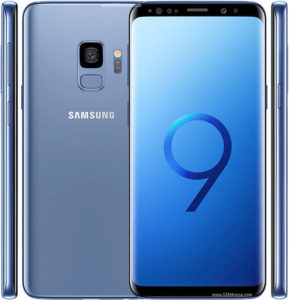 New phones are arriving nearly every day. Samsung unveiled its latest Galaxy S9 flagship. Google is selling lots of its Pixel 2 handset. Apple continues to push its iPhone X. The Vivo Apex concept phone, out of China, has a pop-up selfie camera. And Nokia has reintroduced its famous 8110 model – the slide-down keyboard model featured in the 1999 movie, “The Matrix.”
New phones are arriving nearly every day. Samsung unveiled its latest Galaxy S9 flagship. Google is selling lots of its Pixel 2 handset. Apple continues to push its iPhone X. The Vivo Apex concept phone, out of China, has a pop-up selfie camera. And Nokia has reintroduced its famous 8110 model – the slide-down keyboard model featured in the 1999 movie, “The Matrix.”
Yet there is a slowdown happening. Hard to say whether it’s merely seasonal, or an indication that despite the latest and newest features, it’s getting harder to distinguish a new phone from its predecessors.
According to the 451 report, “Consumer Smartphones: 90 Day Outlook: Smartphone Buying Slows but Apple and Samsung Demand Strong,” released February 2018: “Demand for smartphones is showing a seasonal downtick, with 12.7% of respondents from 451 Research’s Leading Indicator panel saying they plan on buying a smartphone in the next 90 days.” However, “Despite a larger than expected drop from the September survey, next 90 day smartphone demand is at its highest December level in three years.”
451 reports that over the next 90 days,
Apple (58%) leads in planned smartphone buying but is down 11 points. Samsung (15%) is up 2 points, as consumer excitement builds around next-gen Galaxy S9 and S9+ devices, scheduled to be released in March. Google (3%) is showing a slight improvement, buoyed by the October release of its Pixel 2 and 2 XL handsets. Apple’s latest releases are the most in-demand among planned iPhone buyers: iPhone X (37%; down 6 points), iPhone 8 (21%; up 5 points) and iPhone 8 Plus (18%; up 4 points).
Interestingly, Apple’s famous brand loyalty may be tracking. Says 451, “Google leads in customer satisfaction with 61% of owners saying they’re Very Satisfied. Apple is close behind, with 59% of iPhone owners saying they’re Very Satisfied. That said, it’s important to keep in mind that iPhone owners comprise 57% of smartphone owners in this survey vs. 2% who own a Google Pixel smartphone.”
Everyone Loves the Galaxy S9
Cnet was positively gushing over the new Samsung phone, writing,
A bold new camera, cutting-edge processor and a fix to a galling ergonomic pitfall — all in a body that looks nearly identical to last year’s model. That, in a nutshell, is the Samsung Galaxy S9 (with a 5.8-inch screen) and its larger step-up model, the Galaxy S9 Plus, which sports an even bigger 6.2-inch screen.
Cnet calls out two features. First, a camera upgrade that includes variable aperture designed to capture better low-light images – which is where most phones really fall down.
The other? “The second improvement is more of a fix. Samsung moved the fingerprint reader from the side of the rear camera to the center of the phone’s back, fixing what was without a doubt the Galaxy S8’s most maddening design flaw. Last year’s model made you stretch your finger awkwardly to hit the fingerprint target. No more.”
The Verge agrees with that assessment:
… the Galaxy S9 is actually a pretty simple device to explain. In essence, it’s the Galaxy S8, with a couple of tweaks (like moving the fingerprint sensor to a more sensible location), and all the specs jacked up to the absolute max for the most powerful device on the market — at least, on paper.
Pop Goes the Camera
The Vivo concept phone, the Apex, has a little pop-up front-facing camera designed for selfies. Says TechCrunch, this is part of a trend:
With shrinking bezels, gadget makers have to look for new solutions like the iPhone X notch. Others still, like Vivo and Huawei, are look at more elegant solutions than carving out a bit of the screen.
For Huawei, this means using a false key within the keyboard to house a hidden camera. Press the key and it pops up like a trapdoor. We tried it out and though the housing is clever, the placement makes for awkward photos — just make sure you trim those nose hairs before starting your conference call.
Vivo has a similar take to Huawei though the camera is embedded on a sliding tray that pops-up out of the top of the phone.
So, there’s still room for innovation. A little room. Beyond cameras, and some minor ergonomic improvements, it’s getting harder and harder to differentiate one phone from another – and possibly, to convince buyers to shell out for upgrades. At least, that is, until 5G handsets hit the market.

 Spectre and Meltdown are two separate computer security problems. They are often lumped together because they were revealed around the same time – and both exploit vulnerabilities in many modern microprocessors. The website
Spectre and Meltdown are two separate computer security problems. They are often lumped together because they were revealed around the same time – and both exploit vulnerabilities in many modern microprocessors. The website 

 He died in 1898, but that doesn’t stop Baron Otto von Bismark from wanting to scam you from beyond the grave. Sure, he’s calling himself Diplomat Otto Bismark, but that can’t fool me: We know he’s the First Chancellor of the German Empire, seeking his revenge.
He died in 1898, but that doesn’t stop Baron Otto von Bismark from wanting to scam you from beyond the grave. Sure, he’s calling himself Diplomat Otto Bismark, but that can’t fool me: We know he’s the First Chancellor of the German Empire, seeking his revenge.
 Here’s a scam attempt noteworthy only for its inadvertent humor. Needless to say, any email like this is trying to defraud you. Don’t respond to such messages; simply delete them without asking why an allegedly South African email is coming from a Russian address. Or anything like that.
Here’s a scam attempt noteworthy only for its inadvertent humor. Needless to say, any email like this is trying to defraud you. Don’t respond to such messages; simply delete them without asking why an allegedly South African email is coming from a Russian address. Or anything like that.


 This just in, via Facebook Messenger, from an account called “Clemond Fernand.” It’s a scam. Don’t reply to messages like this – block the account instead.
This just in, via Facebook Messenger, from an account called “Clemond Fernand.” It’s a scam. Don’t reply to messages like this – block the account instead. It’s like this scammer isn’t even trying. Dr. George is disappointed in me for setting up and missing an appointment. Fortunately he went to bat and convinced someone to pay some fees to save my $5.5 million ATM card. If I reply soon and repay the fees, the cash is mine! (I wonder why scammers like to mention that ATM cards were shipped via DHL. Does it make the scam seem more credible than, say, FedEx?)
It’s like this scammer isn’t even trying. Dr. George is disappointed in me for setting up and missing an appointment. Fortunately he went to bat and convinced someone to pay some fees to save my $5.5 million ATM card. If I reply soon and repay the fees, the cash is mine! (I wonder why scammers like to mention that ATM cards were shipped via DHL. Does it make the scam seem more credible than, say, FedEx?)